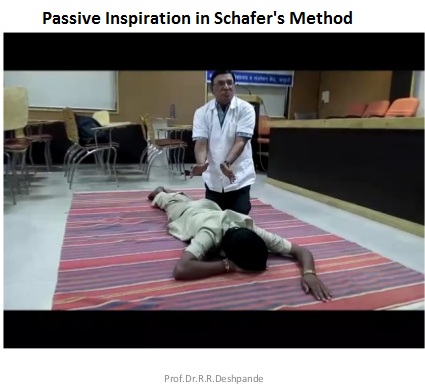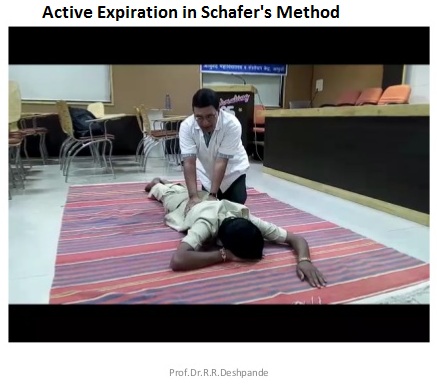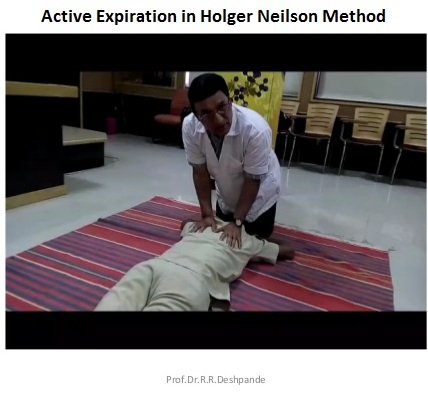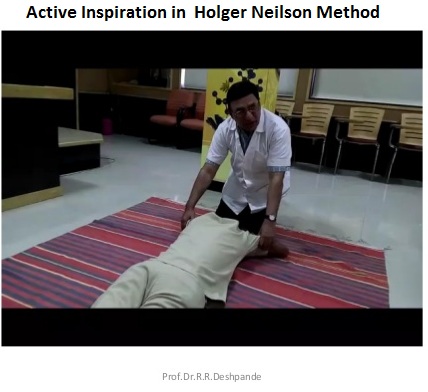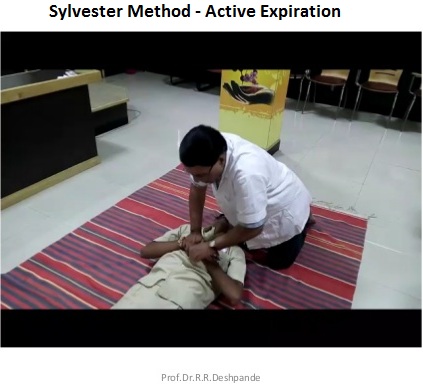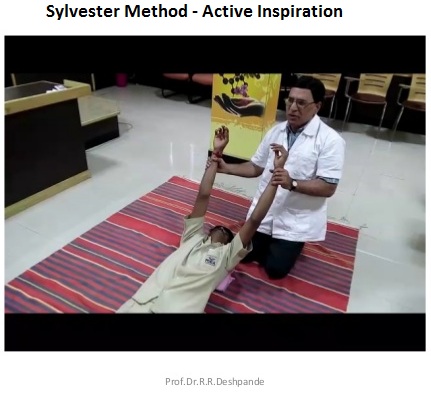Artificial Respiration
Definition
A procedure to sustain respiration so that the patient will not go in hypoxia when the spontaneous respiration stops due to any cause
It may be manual or mechanical
Artificial respiration alone is done when the spontaneous respiration has stopped but the heart beat continues normally.
If there is any cardiac arrest or the heart beat is ineffective it has to be combines with cardiac massage - CPR - Cardiopulmonary Resuscitation
Manual Methods
Done when no mechanical ventilation is readily available.
Indications
No respiration
But heart beat normal
Drowning
Suffocation in smoke
Paralysis of respiratory muscles
Electric shock
Preliminary Steps
Tight clothes loosened
Patient kept warm
Froth in the mouth and nose cleaned
Artificial dentures removed
Patient is kept in fresh atmosphere
Schafer's Method
Done in prone position
Kneel near patient's waist
Pup palms on patient's loins
Bend forward and apply body weight on the patient - Pressure - for 2 seconds
The abdominal viscera get pushed up and cause expiration
Now straighten and stop pressing on the loins - inspiration takes place - for 3 seconds
Advantages
Pressure during prone position expels water from abdomen and lungs - drowning - simple method - no tiredness - can be continued for a long time
In cases where there are injuries to thorax or back it is good
Disadvantages
Inspiration is passive and expiration is active - un physiological
Cannot be used in cases where there are abdominal injuries
Holger Neilson's Method
Arm lift back pressure method
Prone position
Kneel near patient's head facing the patient
Pull up the arms - Inspiration takes because the chest expands
Then place the arms back in position and apply palms on patient's scapulae and press by bending forward - expiration
Timings as mentioned above
Advantages
Drains water from abdomen and lungs - drowning
Suitable for cases with abdominal injuries
Drains water from abdomen and thorax
Suitable for cases with injuries to abdomen
Both inspiration and expiration are active - good ventilation
Disadvantages
A little tiresome to do
Cannot be used if there are inuries of scapulae
Sylverster's Method
Supine position
Pillow kept below shoulder and neck is fully extended
Kneel near patient's head facing the patient
Catch the patient's wrists
Pull the patient's arms up - inspiration
Bend forward and place the patient's hands on his chest and apply deep pressure on his chest - expiration
Timings : inspiration 3 seconds and expiration 2 seconds
Advantages
Both inspiration and expirations are active - good ventilation
Disadvantages
No drainge of water - due to supine position
Tiring
Cannot be used in rib fracture
Mouth to mouth Method
Best method
Kneel near patient's neck facing him
Pillow kept below shoulder to extend neck fully
With one hand pinch the nostrils to close them
Keep a cloth on the patient's mouth if needed
Keep the mouth tightly on the patient's mouth and blow - inspiration - active
Remove the mouth for expiration - passive
Advantages
Expired air of the helping person's blowing contains CO2 - which stimulates patient's respiratory center.
Good ventilation
It is the best method for the new-born
Disadvantages
Supine position - No drainage of water or secretions - fluid is pushed into the lungs - infection
Artificial respiration is started at the site of accident and continued till patient is shifted to the hospital
If the patient starts breathing of his own, the act of respiration is synchronized with the patient's act of respiration.
In hospital set up the patient is connected to ventilator - through oral or nasal route / through tracheostomy
External Cardiac Massage
Needed if there is cardiac arrest - no pulsations at femoral artery or the carotids
Ratio of cardiac massage to artificial respiration : 4:1
* * * * * * *


